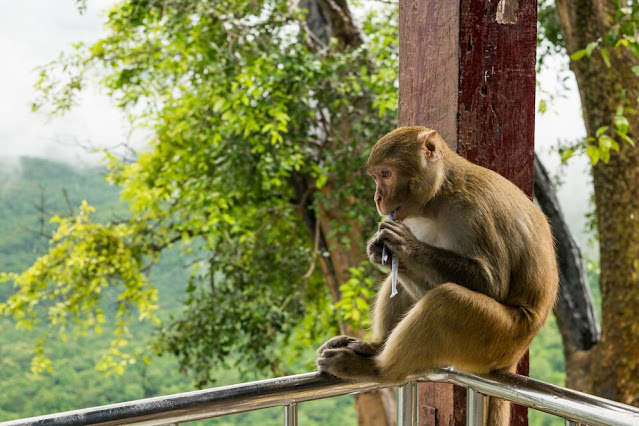Exploring the Diversity: 18 Extraordinary Types of Monkeys
Monkeys are among the most diverse and fascinating creatures on Earth, with nearly 200 different species inhabiting various regions across the globe. From the towering mandrill to the tiny pygmy marmoset, each species possesses unique traits and adaptations that make them extraordinary. Let's delve into the world of monkeys and explore 18 of the most remarkable species.
1. Olive Baboon:
The olive baboon boasts the widest distribution among baboon species, ranging across 25 countries in Africa and the Arabian Peninsula. Despite lacking a prehensile tail, these baboons are skilled climbers and possess powerful jaws adapted for omnivorous diets.
2. Brown Capuchin:
Known for their intelligence and curiosity, brown capuchins are popular actors in movies and TV shows. These playful monkeys exhibit remarkable problem-solving abilities and can live up to 45 years in captivity.
3. Golden Snub-Nosed Monkey:
Endangered and highly social, the golden snub-nosed monkey inhabits mountain forests in Asia. Their unique grouping behavior and adaptation to high altitudes make them fascinating subjects for study.
4. Pygmy Marmoset:
As the smallest monkey species, the pygmy marmoset is a true marvel of nature. Endemic to the Amazon Basin, these tiny primates navigate dense rainforests with agility, using their elongated tails for balance.
5. Mandrill:
The largest monkey in the world, the mandrill, captivates with its vibrant colors and elusive nature. Found in African rainforests, these shy primates possess impressive physical features, including long canine teeth and brilliantly colored rumps.
6. Central American Spider Monkey:
With their long limbs and agile movements, Central American spider monkeys are renowned for their arboreal prowess. Habitat loss and poaching pose significant threats to these endangered primates.
7. Emperor Tamarin:
Named for its distinctive mustache reminiscent of Emperor Wilhelm II, the emperor tamarin is a tiny yet charismatic monkey found in the Amazon Basin. Their playful nature and unique appearance make them a favorite among primatologists and enthusiasts alike.
8. Spix's Night Monkey:
Nocturnal and monochromatic, Spix's night monkeys exhibit intriguing adaptations for life in the dark forests of South America. Their aggressive behavior and nocturnal lifestyle set them apart from other New World monkeys.
9. Proboscis Monkey:
Endemic to Borneo, the proboscis monkey's oversized nose is a striking feature that serves both functional and ornamental purposes. Habitat destruction and hunting threaten the survival of this unique primate species.
10. Bald Uakari:
The bald uakari's crimson face serves as an indicator of its health status, making it a fascinating subject for researchers. Endemic to South America, these monkeys face threats from habitat loss and human encroachment.
11. Japanese Macaque:
Known as snow monkeys, Japanese macaques inhabit diverse habitats across Japan, showcasing remarkable adaptability. Their famous hot spring baths attract tourists from around the world, providing unique opportunities for observation.
12. Gelada:
Highly terrestrial and social, gelada monkeys inhabit the rugged mountains of Ethiopia, displaying unique adaptations for grazing and evading predators. Their flexible fingers and thumbs enable them to navigate rocky terrain with ease.
13. Western Red Colobus:
Equipped with a specialized digestive system for leaf consumption, the western red colobus thrives in the treetops of African forests. Despite their arboreal lifestyle, these monkeys rarely descend to the forest floor.
14. White-Faced Saki:
Renowned for their athletic prowess, white-faced sakis traverse South American forests with impressive agility. Their leaping abilities and arboreal lifestyle contribute to their survival in diverse habitats.
15. Black Snub-Nosed Monkey:
Adapted to high-altitude environments, black snub-nosed monkeys inhabit the mountainous regions of China and Tibet. Threatened by habitat loss and hunting, these endangered primates face an uncertain future.
16. Roloway Monkey:
Among the most endangered monkeys globally, the roloway monkey's distinctive appearance and dwindling populations underscore the urgent need for conservation efforts. Found in western Africa, these monkeys face threats from habitat degradation and poaching.
17. Black Howler:
Known for their resonant calls and striking color dimorphism, black howler monkeys are iconic inhabitants of Latin American forests. Despite their sedentary lifestyle, these monkeys play crucial roles in ecosystem dynamics.
18. Barbary Macaque:
The only wild monkeys in Europe, Barbary macaques inhabit the forests of Morocco, Algeria, and Gibraltar. Threatened by habitat loss and illegal trade, these endangered primates face numerous challenges to their survival.
Conclusion:
From the rainforests of South America to the mountains of Africa and Asia, monkeys occupy diverse habitats and exhibit remarkable adaptations for survival. By studying and conserving these extraordinary primates, we can gain valuable insights into the complexity of life on Earth and ensure their continued existence for future generations to appreciate and admire.
Read: Top 10 Electric Scooter In India | Top 10 CPVC Pipe Manufacturers in India | Electric Bikes Dealership | YouTube to Mp3 Converter | Nebulization | What Is Accounting? | Varanasi Photography | Blog Commenting Sites List With High DA and PA | Vitro Fertilization Hospital in India
 Reviewed by Tech Sneha
on
22 May
Rating:
Reviewed by Tech Sneha
on
22 May
Rating:










No comments: